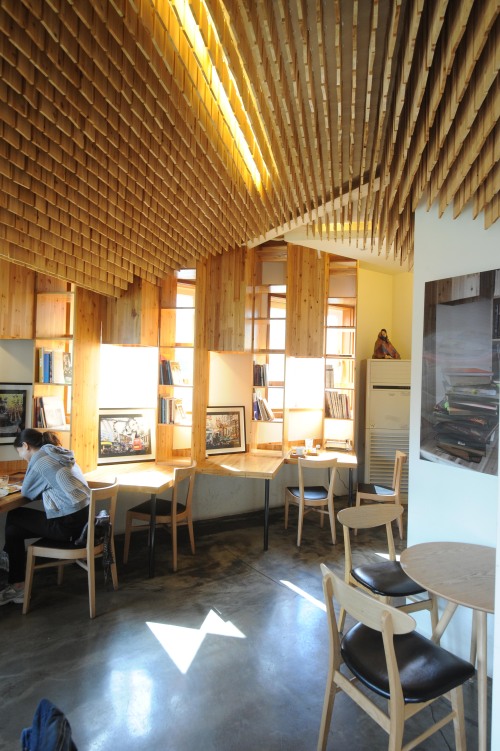Baechu-kimchi is made by fermenting brined Korean cabbage with Korean radish, vegetables, salt-fermented seafood, ground red pepper and various seasonings. Kimchi is a quintessential side dish that is served without fail on dining tables in Korea. Kimchi was approved as an International Standard Food by Codex in 2001. Certain studies have shown a link between kimchi and cancer prevention.
Ingredients
● 4.8 kg Korean cabbage, 700 g cups coarse salt, 5 liters water
● 1 radish, 100 g watercress, 200 g small green onion, 200 g mustard leaf
● 1 cup oyster: 1/2 tbsp salt, 2 cups water
● seasoning: 1 1/3 cups ground red pepper, 1/2 cup salted anchovy juice, 100 g salted shrimps, 1 tbsp sugar, 200 g green onion, 5 tbsp minced garlic, 3 tbsp minced ginger, kimchi liquid: 1/2 cup water, 1/2 tsp salt
1. Trim the bottom and outer leaves of the cabbage, put a deep knife slit lengthwise and split it into two parts, marinate them in salt water in which half (350 g) of the coarse salt dissolved, and spread remaining half of the salt in between the inner leaves. Let it sit cut side up for 3 hours, and then another 3 hours after turning over.
2. Rinse the cabbage under running water 3-4 times, drain for about 1 hour.
3. Trim and wash the radish, and cut into slivers. Trim and wash watercress stalks, small green onion and mustard leaf, cut them into 4 cm pieces. (watercress 60g, small green onion 150 g, mustard leaf 150 g).
4. Wash the fresh oyster gentlyin mild salt water and drain.
5. Mince the salted shrimp finely. Add the ground red pepper to the salted shrimp juice and salted anchovy juice.
6. Add soaked red pepper to the radish, mix well, add remained seasonings, and mix well again. Add vegetables and oyster, mix softly and season with salt.
7. Pack the seasonings in between each leaf of the cabbage, fold over the outer leaves to hold in the seasonings.
8. Place halves in a jar one by one until 70-80 percent of the jar filled, cover the top with marinated outer leaves.
9. Adding some water and salt into the kimchi mixing container. Then pour the liquid into the jar and press down.
Tips
● For the best taste and nutrition ferment under ground at 10 ºC for around 3 weeks.
● Fresh shrimps or glue plants may be added into the kimchi.
(Adapted from the Institute of Traditional Korean Food)
 |
| Baechu kimchi (Institute of Traditional Korean Food) |
Ingredients
● 4.8 kg Korean cabbage, 700 g cups coarse salt, 5 liters water
● 1 radish, 100 g watercress, 200 g small green onion, 200 g mustard leaf
● 1 cup oyster: 1/2 tbsp salt, 2 cups water
● seasoning: 1 1/3 cups ground red pepper, 1/2 cup salted anchovy juice, 100 g salted shrimps, 1 tbsp sugar, 200 g green onion, 5 tbsp minced garlic, 3 tbsp minced ginger, kimchi liquid: 1/2 cup water, 1/2 tsp salt
1. Trim the bottom and outer leaves of the cabbage, put a deep knife slit lengthwise and split it into two parts, marinate them in salt water in which half (350 g) of the coarse salt dissolved, and spread remaining half of the salt in between the inner leaves. Let it sit cut side up for 3 hours, and then another 3 hours after turning over.
2. Rinse the cabbage under running water 3-4 times, drain for about 1 hour.
3. Trim and wash the radish, and cut into slivers. Trim and wash watercress stalks, small green onion and mustard leaf, cut them into 4 cm pieces. (watercress 60g, small green onion 150 g, mustard leaf 150 g).
4. Wash the fresh oyster gentlyin mild salt water and drain.
5. Mince the salted shrimp finely. Add the ground red pepper to the salted shrimp juice and salted anchovy juice.
6. Add soaked red pepper to the radish, mix well, add remained seasonings, and mix well again. Add vegetables and oyster, mix softly and season with salt.
7. Pack the seasonings in between each leaf of the cabbage, fold over the outer leaves to hold in the seasonings.
8. Place halves in a jar one by one until 70-80 percent of the jar filled, cover the top with marinated outer leaves.
9. Adding some water and salt into the kimchi mixing container. Then pour the liquid into the jar and press down.
Tips
● For the best taste and nutrition ferment under ground at 10 ºC for around 3 weeks.
● Fresh shrimps or glue plants may be added into the kimchi.
(Adapted from the Institute of Traditional Korean Food)

















